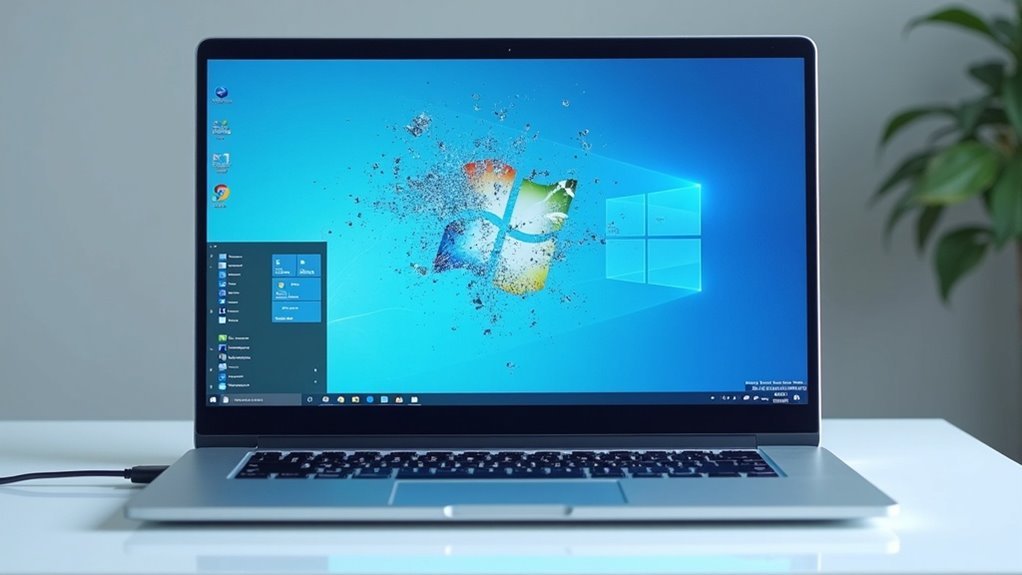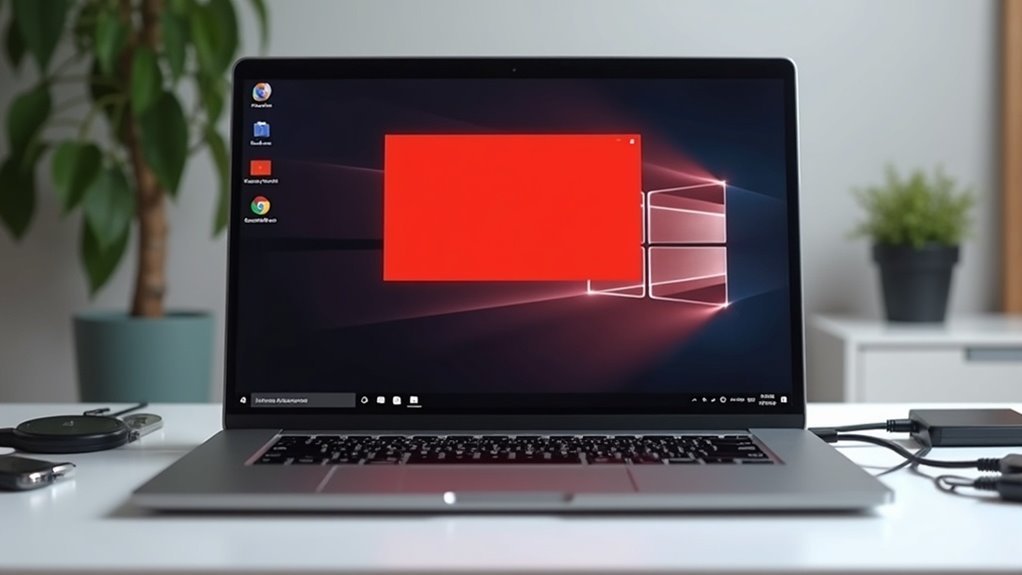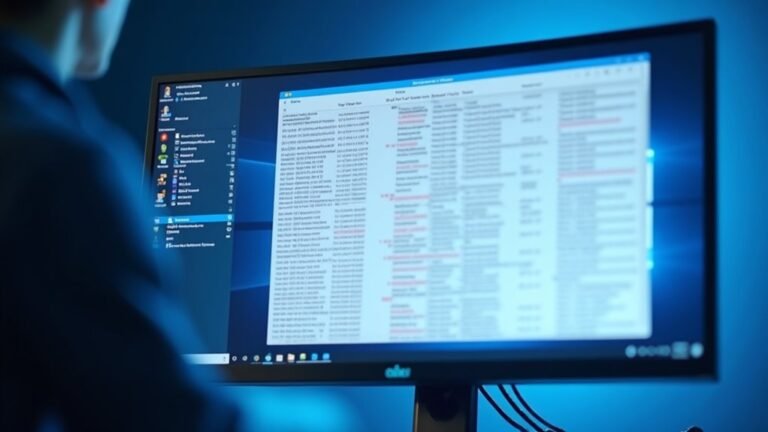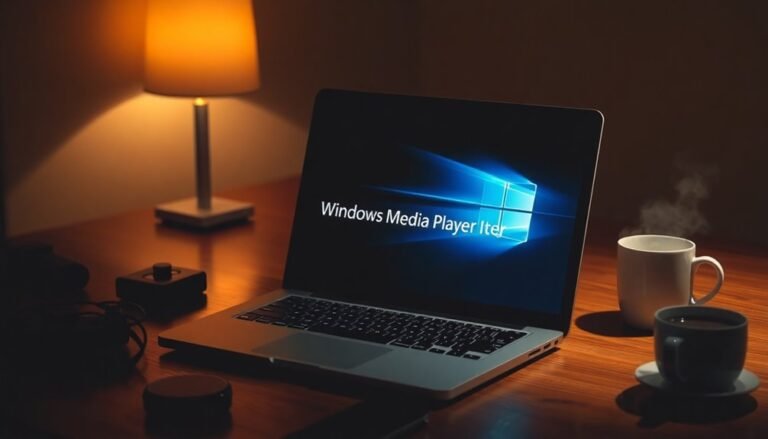Install Error 0x800711c7 Windows 11 S Mode: Fix S Mode Installation

To fix Install Error 0x800711c7 in Windows 11 S Mode, start by updating Windows. Also, verify your device’s date, time, and internet connection.
Reset or reinstall the Microsoft Store using PowerShell. Confirm you’re signed in with a Microsoft account.
Check BIOS settings—Secure Boot and TPM 2.0 should be enabled. If issues persist, temporarily disable Secure Boot.
Ensure your system hardware is compatible and apps are up-to-date. This helps maintain smooth installation.
There are more targeted steps you can try next.
Understanding Error 0x800711c7 in Windows 11 S Mode

Understanding and Fixing Windows 11 S Mode Error 0x800711c7
Error 0x800711c7 is a common issue that Windows 11 users encounter when trying to switch out of or install S Mode. This error usually appears during the mode conversion process, often triggered through the Microsoft Store. The error message, such as “Something happened and we couldn’t start the upgrade,” indicates a system or software conflict preventing a successful S Mode switch.
This issue specifically affects Windows 11 devices running S Mode, regardless of the processor type. The root cause is typically related to software problems—especially issues with the Microsoft Store app. If the Store app is corrupted or malfunctioning, it can block S Mode upgrades or exits.
Since S mode can only be enabled on pre-configured devices or through fresh installations, users may experience this error more frequently if they attempt unsupported manual changes. Other contributing factors can include incomplete system updates and Secure Boot settings found in UEFI/BIOS. Because Windows 11 S Mode enforces strict security measures, any misconfiguration or corruption within the Store or system components can trigger error 0x800711c7.
To resolve error 0x800711c7 in Windows 11 S Mode, users should focus on repairing or resetting the Microsoft Store, ensuring all system updates are properly installed, and verifying Secure Boot settings in UEFI/BIOS. Addressing these areas can help overcome this critical roadblock and allow for smooth S Mode switching or installation on Windows 11 devices.
Common Causes Behind S Mode Install Failures
Common Causes of Windows 11 S Mode Installation Failures and How to Fix Them
Switching out of Windows 11 S Mode can sometimes fail due to various software, network, and system-related issues. Understanding the common reasons behind these installation failures can help you troubleshoot and complete the process smoothly.
1. Microsoft Store Errors and Corruption
Many S Mode installation problems originate from the Microsoft Store. Issues like outdated app versions, corrupted cache, or failed updates can block the deactivation process. Ensuring the Microsoft Store is up to date and clearing its cache often resolves these errors.
2. Unstable or Misconfigured Internet Connections
A stable internet connection is essential for switching out of S Mode. Problems with network connectivity, such as incorrect proxy settings, faulty network drivers, or system time inaccuracies, can prevent your device from verifying and processing the switch.
3. User Account and Licensing Conflicts
Switching out of S Mode requires signing in with a valid Microsoft account. Using a local account or encountering conflicts between different Windows editions can cause installation failures. Verify that you’re signed into the correct Microsoft account and that your Windows edition supports switching out of S Mode.
4. Hardware and Firmware Incompatibilities
Certain hardware limitations, including missing wireless drivers or OEM-specific firmware restrictions, may block communication with activation servers. Updating device drivers and checking for manufacturer firmware updates can help overcome these barriers. If basic troubleshooting fails, you may need to use advanced troubleshooting methods such as PowerShell commands or accessing UEFI/BIOS settings to resolve persistent issues.
By addressing these common causes—Microsoft Store errors, network issues, account conflicts, and hardware incompatibilities—you can effectively troubleshoot and resolve Windows 11 S Mode installation failures.
For best results, keep your system updated and ensure all components are properly configured before attempting to switch out of S Mode.
How to Prepare Your System Before Switching S Modes
How to Prepare Your System Before Switching Out of Windows 11 S Mode
Before switching your device in or out of Windows 11 S Mode, it’s crucial to ensure your system meets all the necessary hardware, software, and connectivity requirements for a smooth transition.
First, verify that your processor supports Windows 11—compatible CPUs include Intel 8th Gen, AMD Zen+, or newer models. Make sure your device has at least 4 GB of RAM and 64 GB of storage available.
Check that UEFI firmware with Secure Boot and TPM 2.0 are enabled in your BIOS settings. Remember, only Windows 11 Home edition supports S Mode, so confirm you aren’t running Windows 11 Pro or Enterprise editions before proceeding.
Next, fully update your Windows 11 system to the latest version. Temporarily disable any third-party antivirus or system optimization software to prevent conflicts during the switch.
Remove incompatible drivers or applications, particularly those that don’t comply with the DCH driver model. It’s highly recommended to back up important files and create a system restore point to safeguard your data.
Ensure you have a stable internet connection and sign in with a Microsoft Account to enable activation features.
Verify that all peripheral drivers are compatible and check that no network policies or firewalls restrict installation or activation processes.
By following these essential steps to prepare your system before switching out of Windows 11 S Mode, you can ensure a hassle-free and successful transition.
For more detailed guides on Windows 11 S Mode and device optimization, stay tuned to our latest updates.
Step-by-Step Solutions to Resolve Error 0x800711c7

How to Fix Error 0x800711c7 When Switching Out of Windows 11 S Mode: Step-by-Step Guide
Experiencing error 0x800711c7 while trying to switch out of Windows 11 S Mode? Follow these proven solutions to fix the problem quickly and smoothly.
1. Verify and Correct Date & Time Settings
Incorrect system date and time can prevent switching out of S Mode. To fix this, go to Settings > Time & Language > Date & Time, enable Set time automatically, and restart your PC to ensure the settings take effect.
2. Use the Official Microsoft Store Path to Switch Out of S Mode
Always switch out of S Mode through the right process: navigate to Settings > System > Activation**, then click Switch to Windows 11 Pro and select Go to the Store. Ensure you have an active internet connection** and are signed in with a Microsoft account to complete the switch.
3. Reset or Reinstall Microsoft Store Using PowerShell
If the error persists, resetting or reinstalling the Microsoft Store app can help. Open PowerShell as an administrator and run the necessary commands to reset or reinstall the Store. Afterward, restart your PC and attempt the switch again.
4. Update Windows and Run the Store Apps Troubleshooter
Keeping Windows updated can resolve compatibility issues causing error 0x800711c7. Go to Settings > Windows Update and install all available updates. Additionally, run the Windows Store Apps troubleshooter** from Settings > System > Troubleshoot > Other troubleshooters** to automatically detect and fix Store-related problems.
Summary:
- Check and correct date and time settings in Windows 11.
- Switch out of S Mode via Settings > System > Activation > Go to the Store.
- Reset or reinstall Microsoft Store using PowerShell commands.
- Update Windows and run the Store Apps troubleshooter for best results.
Advanced Troubleshooting and Workarounds
How to Enter BIOS/UEFI and Disable Secure Boot to Switch Out of S Mode
To access BIOS or UEFI settings, press F2, F10, Del, or Esc during your computer’s boot process.
If you encounter issues switching out of Windows 10 or 11 S Mode, disabling Secure Boot in BIOS/UEFI can help resolve this block. Be sure to save all changes before rebooting your device.
For advanced users looking to modify S Mode status, editing the `SkuPolicyRequired` registry key is an option—but only after backing up your system to prevent data loss.
Always restart your PC to ensure these changes take effect.
Following these expert troubleshooting steps can effectively unlock full Windows functionality beyond S Mode restrictions.
Key Considerations When Using Windows 11 S Mode
Key Considerations for Using Windows 11 S Mode: Pros, Cons, and Compatibility
When deciding whether to use Windows 11 S Mode, it’s essential to understand the key benefits and limitations of this streamlined operating system version.
Windows 11 S Mode offers enhanced security by allowing only Microsoft Store apps, which helps protect your device from malware and unauthorized software. However, this strict app restriction means you can’t install popular third-party applications like Google Chrome, Zoom, or advanced code editors, which may affect productivity and development workflows.
Windows 11 S Mode App Restrictions:
Windows 11 S Mode limits you to Microsoft Store apps only, preventing installation of non-Store apps and alternative browsers. This can impact compatibility with essential third-party tools and utilities.
Enhanced Security in Windows 11 S Mode:
By blocking external software sources and restricting system-level changes, Windows 11 S Mode protects your PC from potential threats and unauthorized modifications, making it ideal for users prioritizing security.
Customization and Flexibility Limitations:
Windows 11 S Mode doesn’t allow switching default browsers or deep system personalization. Administrative controls and customization options are limited, which can be restrictive for power users.
Ideal Use Cases for Windows 11 S Mode:
This mode is best suited for educational environments, kiosks, or lightweight business scenarios where minimal management, high security, and simplicity are priorities.
Before enabling Windows 11 S Mode, carefully evaluate whether its security advantages and simplified management align with your computing needs and software requirements.
Understanding these considerations will help you make an informed decision about using Windows 11 S Mode.
Tips to Prevent Future S Mode Installation Issues

How to Prevent Windows 11 S Mode Installation Issues: Top Tips and Best Practices
Managing Windows 11 S Mode installations can be straightforward when you follow the right steps to prevent common errors like 0x800711c7. To ensure a smooth S Mode installation or switch, start by keeping your system fully updated.
Enable automatic Windows updates and manually check for the latest patches via Settings > Windows Update before initiating any S Mode changes. Regular updates address compatibility and security fixes essential for error-free installations.
Always use official Microsoft tools and methods when installing or switching to Windows 11 S Mode. Utilize the Media Creation Tool or OEM-provided setup options, and avoid unofficial tweaks or unsupported registry modifications that can cause installation failures.
Verify that your device hardware and processor meet Windows 11 S Mode compatibility requirements to prevent hardware-related errors.
When using Windows 11 S Mode, stick to apps available exclusively through the Microsoft Store. Check app compatibility and device support by reviewing store descriptions and manufacturer guidelines.
Maintain system integrity by signing in with a Microsoft account, running periodic system file checks (SFC), and steering clear of corrupted user profiles.
Before making major changes to your system, back up important data to avoid loss. Prepare installation media carefully using official Windows 11 ISO files and trusted tools like Rufus.
Ensure you have a reliable internet connection throughout the installation process to minimize interruptions. Additionally, disconnect unnecessary peripherals and clear sufficient disk space to avoid hardware conflicts and storage issues.
Frequently Asked Questions
Can I Use Third-Party Antivirus in Windows 11 S Mode?
You can’t install traditional third-party antivirus in Windows 11 S mode. Only Microsoft Store-verified apps are allowed, so Windows Defender is your main protection. To use other antivirus software, you’ll need to switch out of S mode.
Will Switching Out of S Mode Erase My Personal Files?
Switching out of S mode won’t erase your personal files or documents. You’ll keep your data intact, but it’s smart to back up important files first, just in case you encounter any unexpected issues during the changeover.
Is S Mode Available on Windows 11 Pro or Enterprise Editions?
Imagine chasing a feature that’s just out of reach—Windows 11 Pro and Enterprise don’t offer S mode. You can’t enable it on these editions; it’s exclusive to Windows 11 Home, simplifying and securing only that environment.
How Do I Check if My Device Originally Shipped With S Mode?
To check if your device originally shipped with S mode, review your manufacturer’s documentation or product listing, compare your serial/model with OEM support, and verify initial setup details—Windows settings alone won’t confirm original S mode shipment status.
Can I Reinstall S Mode After Switching Out Permanently?
You can’t toggle S Mode back on through settings; you’ll need to perform a full clean install with the S Mode Windows 11 ISO. Don’t worry—visual guides and official tools make the process straightforward if you follow instructions.
Conclusion
Think of your Windows 11 S Mode installation like a locked door—error 0x800711c7 is the stubborn key refusing to turn. By following these troubleshooting steps, you’ve gathered the right tools to open smooth installations and sidestep future problems. Remember, S Mode’s security is a shield, but it needs a sturdy foundation. With careful preparation and precise fixes, you’ll guarantee your system’s door stays open to productivity, not blocked by error codes.





